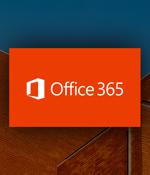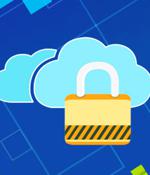Security News

Security researchers at WithSecure, previously F-Secure Business, found that it is possible to partially or fully infer the contents of encrypted messages sent through Microsoft Office 365 due to the use of a weak block cipher mode of operation. Organizations use Office 365 Message Encryption to send or receive emails, both external and internal, to ensure confidentiality of the content from destination to source.

Microsoft is working on updating Microsoft Defender for Office 365 to allow Microsoft Teams users to alert their organization's security team of any dodgy messages they receive.Microsoft Defender for Office 365 protects organizations from malicious threats from email messages, links, and collaboration tools.

A business email compromise scheme targeting CEOs and CFOs using Microsoft Office 365 combines phishing with a man-in-the-middle attack to bypass multi-factor authentication. These attacks take advantage of a Microsoft 365 design flaw that allows miscreants to compromise accounts with MFA enabled and achieve persistence in victims' systems by adding a new, compromised, authentication method allowing them to come back at any time.

Whether it's Slack or Office 365, communication and workflow apps are an essential tool for organizations to collaborate efficiently regardless of geography. Using any of these as a primary communication channel, replacing email and knowledge management repositories, makes it a new target to exploit that contains sensitive information.

A massive phishing campaign has been targeting Office 365 users in over 10,000 organizations since September 2021 and successfully bypassing multi-factor authentication set up to protect the accounts. The attackers use proxy servers and phishing websites to steal users' password and session cookie.

Researchers are warning attackers can abuse Microsoft Office 365 functionality to target files stored on SharePoint and OneDrive in ransomware attacks."Proofpoint has discovered a potentially dangerous piece of functionality in Office 365 or Microsoft 365 that allows ransomware to encrypt files stored on SharePoint and OneDrive in a way that makes them unrecoverable without dedicated backups or a decryption key from the attacker," according to researchers.

A phishing campaign using fake voicemail notifications has been and is still targeting various US-based organizations, in an attempt to grab employees' Office365 and Outlook login credentials, Zscaler warns. The campaing seems to be a repeat of a previous, similar one, and targets security solution providers, software security developers, supply-chain organizations in manufacturing and shipping, healthcare and pharmaceutical firms, and the US military.

A "Dangerous piece of functionality" has been discovered in Microsoft 365 suite that could be potentially abused by a malicious actor to ransom files stored on SharePoint and OneDrive and launch attacks on cloud infrastructure. The cloud ransomware attack makes it possible to launch file-encrypting malware to "Encrypt files stored on SharePoint and OneDrive in a way that makes them unrecoverable without dedicated backups or a decryption key from the attacker," Proofpoint said in a report published today.

Security firm Proofpoint has uncovered what it calls a "Potentially dangerous piece of functionality" in Microsoft Office 365 that allows ransomware to encrypt files stored on SharePoint and OneDrive in a way that renders them unrecoverable without dedicated backups or a decryption key from the attacker. Monetization: Now all original versions of the files are lost, leaving only the encrypted versions of each file in the cloud account.

Security researchers are warning that threat actors could hijack Office 365 accounts to encrypt for a ransom the files stored in SharePoint and OneDrive services that companies use for cloud-based collaboration, document management and storage. A ransomware attack targeting files on these services could have severe consequences if backups aren't available, rendering important data inaccessible to owners and working groups.